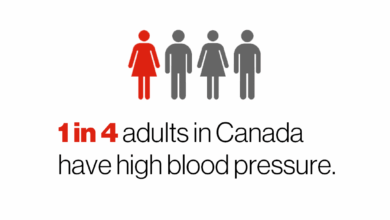
How bad are e cigarettes – How bad are e-cigarettes? This comprehensive look explores the potential health risks, addictive nature, regulations, demographics affected, safety concerns, and overall impact on public health. We’ll examine the chemicals in e-cigarette vapor, potential long-term effects, and compare them to traditional cigarettes.
From the potential for respiratory and cardiovascular problems to the addictive properties of nicotine, the complexities of e-cigarettes are undeniable. This analysis delves into the science behind the devices, the policies surrounding their use, and the demographics most susceptible to adoption.
Health Risks of E-Cigarettes: How Bad Are E Cigarettes

E-cigarettes, marketed as a safer alternative to traditional cigarettes, have gained popularity. However, the long-term health effects of e-cigarette use remain a subject of ongoing research and concern. While some argue that e-cigarettes are less harmful than conventional cigarettes, the potential for harm is significant and warrants careful consideration.E-cigarette vapor, often touted as harmless, contains a complex mixture of chemicals.
These chemicals are inhaled into the lungs and can potentially damage various organs and systems within the body. Understanding the composition of e-cigarette vapor and its potential health effects is crucial for making informed decisions about personal health and well-being.
Chemicals Found in E-cigarette Vapor
E-cigarette vapor is not simply water vapor. It contains a variety of chemicals, some of which are known carcinogens. These chemicals can vary significantly depending on the specific e-cigarette device, the type of e-liquid used, and the vaping method. Common components include propylene glycol, vegetable glycerin, nicotine, and flavorings. The presence of heavy metals like nickel, lead, and chromium, and volatile organic compounds (VOCs), has also been detected.
Furthermore, some studies suggest the presence of ultrafine particles and other potentially harmful substances.
Potential Long-Term Health Effects
E-cigarette use has been linked to several potential long-term health effects. Respiratory issues, including inflammation and damage to the airways, are a concern. Chronic obstructive pulmonary disease (COPD) is a possibility, particularly with prolonged use. Cardiovascular problems, such as increased blood pressure and heart rate, have also been associated with e-cigarette use. Furthermore, emerging evidence suggests a potential link between e-cigarette use and certain types of cancer, although more research is needed to fully understand this relationship.
Mechanisms of Chemical Damage
The chemicals in e-cigarette vapor can damage the body through various mechanisms. For instance, propylene glycol and vegetable glycerin can irritate the airways and lungs. Nicotine, a highly addictive substance, can disrupt neurotransmission and potentially contribute to cardiovascular problems. Certain chemicals can also damage DNA, potentially leading to cancerous mutations. The exact mechanisms and extent of damage from different chemicals are still under investigation.
Comparison to Traditional Cigarettes
While both e-cigarettes and traditional cigarettes pose health risks, the specific nature of the risks differs. Traditional cigarettes contain numerous harmful chemicals, including tar, heavy metals, and various carcinogens, that directly damage the lungs and cardiovascular system. E-cigarettes, on the other hand, while containing nicotine and other harmful substances, do not contain the same level of known carcinogens and harmful components as traditional cigarettes.
However, the long-term effects of e-cigarette use are still being studied, and the potential risks are not fully understood. The presence of certain chemicals in e-cigarette vapor, even if present in smaller amounts, can still contribute to health issues over time.
Comparison Table: Health Risks of E-cigarettes and Traditional Cigarettes
| Risk Factor | E-Cigarette Impact | Traditional Cigarette Impact | Supporting Evidence |
|---|---|---|---|
| Respiratory Issues | Inflammation, airway damage, potential COPD | Chronic bronchitis, emphysema, lung cancer | Studies on e-cigarette vapor effects on lung tissue; epidemiological studies on smoking-related respiratory diseases. |
| Cardiovascular Problems | Increased blood pressure, heart rate, potential heart disease | Increased risk of heart attack, stroke, peripheral artery disease | Studies examining the effects of nicotine and other chemicals on the cardiovascular system; epidemiological studies on smoking-related cardiovascular diseases. |
| Cancer Risk | Potential link to various cancers, ongoing research | Significant link to lung cancer, and other cancers | Studies investigating the carcinogenic potential of e-cigarette chemicals; epidemiological studies on smoking-related cancer. |
| Nicotine Addiction | Highly addictive | Highly addictive | Well-established scientific understanding of nicotine’s addictive properties. |
E-Cigarette Addiction and Dependence

E-cigarettes, despite often being marketed as a safer alternative to traditional cigarettes, are still highly addictive due to their nicotine content. Understanding the mechanisms behind this addiction is crucial for comprehending the potential health risks associated with e-cigarette use, especially for those who may be vulnerable to developing dependence. The addictive nature of nicotine, coupled with the often-subtle psychological factors, can make quitting challenging for many users.Nicotine, the primary addictive component in e-cigarettes, works by stimulating the release of dopamine in the brain.
This creates a pleasurable sensation, reinforcing the behavior of using e-cigarettes. Over time, the brain adapts, requiring higher doses of nicotine to achieve the same level of satisfaction. This is a classic example of tolerance and dependence. Users may find themselves reaching for e-cigarettes more frequently or in situations they wouldn’t have previously associated with nicotine use.
This behavioral aspect, coupled with the physical dependence, often leads to a cycle of use and cravings.
Nicotine’s Addictive Mechanism
Nicotine’s addictive properties are primarily due to its rapid effect on the brain’s reward system. It triggers the release of dopamine, a neurotransmitter associated with pleasure and reward. This immediate reinforcement creates a positive feedback loop, making the user more likely to repeat the behavior of using e-cigarettes. Repeated exposure leads to tolerance, meaning the user needs more nicotine to achieve the same effect.
This is a crucial factor in the development of dependence.
Psychological and Behavioral Aspects of E-Cigarette Addiction
Beyond the physiological effects of nicotine, psychological and behavioral factors play a significant role in e-cigarette addiction. These factors can include stress relief, social situations, and even learned associations. E-cigarette use may become intertwined with daily routines or social activities, making it difficult to separate from the behavior. For example, a user might associate e-cigarette use with certain social gatherings or stressful situations, making cessation more challenging.
Potential Withdrawal Symptoms Associated with E-Cigarette Cessation
Quitting e-cigarette use can lead to various withdrawal symptoms, ranging from mild discomfort to more significant distress. These symptoms are a direct consequence of the body’s adjustment to the absence of nicotine. Understanding these potential effects is crucial for developing effective strategies to manage them and successfully quit. These symptoms vary significantly between individuals, depending on factors like the duration and intensity of e-cigarette use.
Strategies for Managing Nicotine Withdrawal Symptoms
Managing nicotine withdrawal symptoms requires a multifaceted approach that combines medication, behavioral therapies, and lifestyle adjustments. Nicotine replacement therapy (NRT) can help alleviate physical withdrawal symptoms by providing controlled doses of nicotine. Counseling and support groups can offer valuable strategies to address the psychological aspects of quitting and coping with cravings. Making lifestyle changes, like incorporating regular exercise and stress management techniques, can also be helpful in managing withdrawal symptoms.
Common Withdrawal Symptoms Table
| Symptom | Severity (1-5, 1 being mild, 5 being severe) | Duration (Approximate) |
|---|---|---|
| Irritability | 3 | 1-4 weeks |
| Difficulty concentrating | 2 | 2-6 weeks |
| Anxiety | 3 | 1-4 weeks |
| Depressed mood | 2 | 2-6 weeks |
| Increased appetite | 3 | 2-6 weeks |
| Insomnia | 3 | 1-4 weeks |
E-Cigarette Regulation and Policies
E-cigarette use has become increasingly prevalent worldwide, prompting governments to implement various regulations to address public health concerns and manage the associated risks. These policies aim to balance the potential benefits of e-cigarettes as a smoking cessation tool with the need to protect vulnerable populations, particularly youth, from initiation and addiction. Different nations have adopted diverse approaches to regulating e-cigarettes, reflecting varying cultural contexts, scientific understanding, and political priorities.The regulatory landscape surrounding e-cigarettes is constantly evolving, with new research and emerging data influencing policy decisions.
Governments face the challenge of adapting to the rapidly changing technological landscape of e-cigarette products while addressing the long-term health impacts of these products. Effective regulations need to consider the potential for misuse, the accessibility of e-cigarettes to young people, and the impact on existing tobacco control efforts.
Current Regulations in Different Countries
E-cigarette regulations vary significantly across the globe. Some countries have adopted comprehensive regulations, while others have opted for a more lenient approach. This disparity in policies reflects differing views on the potential harms and benefits of e-cigarettes.
Arguments For and Against Stricter Regulations
Arguments for stricter regulations often center on public health concerns, particularly the potential for e-cigarette use to lead to nicotine addiction, and the harm from exposure to potentially harmful chemicals. Opponents of stricter regulations sometimes argue that restrictions stifle innovation in the development of potentially less harmful nicotine delivery systems, and that strict regulations may limit access to these products for those seeking alternatives to traditional cigarettes.
International and National Policies
Many countries and regions have enacted policies related to e-cigarette sales and use. These policies range from outright bans on e-cigarette sales to more nuanced regulations that focus on age restrictions, advertising restrictions, and product standards.
- Many European countries have implemented comprehensive regulations, including age restrictions, marketing restrictions, and requirements for product safety testing. The EU, for example, has a unified approach, creating a common standard for all member states. This standardized approach aims to reduce the health risks associated with e-cigarette use across the entire region.
- In contrast, some countries in Asia have taken a more cautious approach, often focusing on restricting sales to minors or limiting advertising aimed at youth. Their approach tends to be more closely tied to traditional tobacco control strategies.
- The United States has a complex regulatory environment, with a patchwork of state and federal regulations. Federal regulations, such as those surrounding youth access and product labeling, often complement state-level restrictions, though they vary in stringency.
Comparison of Regulatory Approaches
Different governments utilize varied approaches to regulating e-cigarettes. Some emphasize comprehensive restrictions, including product standards, advertising bans, and age limits. Others focus on measures to limit access to minors and to promote public awareness of potential risks.
| Country/Region | Age Restrictions | Advertising Restrictions | Other Key Policies |
|---|---|---|---|
| United States (various states) | 18+ in most states | Restrictions on youth-oriented advertising vary | Product safety standards, flavor restrictions, and taxation |
| European Union | 18+ | Strict restrictions on advertising | Product safety requirements, potential for a common market for regulated products |
| China | 18+ | Restrictions on advertising and promotion | Focus on limiting youth access, monitoring product safety |
E-Cigarette Use Among Different Demographics
E-cigarettes have gained significant popularity, particularly among younger populations. Understanding the factors driving this use, the demographics most affected, and the strategies employed to attract them is crucial for developing effective prevention and intervention strategies. This analysis delves into the specific vulnerabilities and influences impacting different groups.E-cigarette use is not uniformly distributed across all demographics. Specific groups, such as adolescents and young adults, demonstrate a higher susceptibility.
This vulnerability is multifaceted, encompassing social, cultural, and marketing influences. Recognizing the intricacies of these factors is paramount to developing tailored interventions.
E-cigarettes, while seemingly less harmful than traditional cigarettes, are still a significant health concern. The long-term effects are still being studied, but the potential for serious health issues, including eye problems, is a concern. For instance, some studies suggest a link between vaping and eye problems common in people with Parkinson’s disease, potentially impacting vision and overall eye health.
Eye problems common in people with Parkinson’s disease are a complex issue, and the relationship to e-cigarette use requires further research. Ultimately, the evidence suggests that e-cigarettes are not a harmless alternative, and more research is needed to fully understand their impact on overall health.
Adolescents and Young Adults: A Vulnerable Population
Adolescents and young adults often face peer pressure and seek social acceptance, making them more susceptible to adopting new behaviors, including e-cigarette use. This age group is particularly impressionable and often lacks the full cognitive development necessary to fully understand the long-term health consequences of e-cigarette use. Marketing strategies targeting this demographic play a significant role in shaping their perceptions.
E-cigarettes are definitely a hot topic, and it’s easy to see why people are concerned about their impact on health. While the debate rages on, it’s inspiring to see how some people are using their skills to tackle serious issues. For example, a Microsoft data scientist, after the tragic loss of their newborn son, leveraged their expertise to find innovative ways to combat Sudden Infant Death Syndrome (SIDS) – a truly heartbreaking and impactful loss.
This innovative work, highlighted in this article , reminds us that even in the face of personal tragedy, people can find purpose and drive to make a real difference. Ultimately, the long-term effects of e-cigarettes on health are still being researched, but this story reminds us of the profound impact individuals can have.
Factors Contributing to E-Cigarette Use
Several factors contribute to e-cigarette use among adolescents and young adults. These include social influences, such as peer pressure and the desire to fit in. The perceived image and coolness associated with e-cigarette use are powerful motivators. Furthermore, the availability of flavored e-liquids and the perception of e-cigarettes as a less harmful alternative to traditional cigarettes can also contribute to the uptake.
Marketing Strategies Targeting Specific Demographics, How bad are e cigarettes
Aggressive marketing campaigns aimed at younger populations often employ tactics such as social media promotions, influencer collaborations, and the use of attractive packaging and flavors. The widespread availability of e-cigarettes through online retailers and vape shops exacerbates the issue. Companies strategically target adolescents and young adults by emphasizing social acceptance and the coolness associated with e-cigarette use.
Social and Cultural Influences on E-cigarette Use
Social and cultural norms can significantly influence e-cigarette use. Trends and perceptions within social circles, communities, and cultural groups can significantly shape attitudes towards e-cigarettes. Exposure to e-cigarette use in social settings, movies, and media portrayals can also shape norms and behaviors. Cultural perceptions of e-cigarettes as a symbol of status or coolness also play a role.
Prevalence of E-Cigarette Use Among Different Demographics
| Demographic Group | Prevalence of E-Cigarette Use (%) |
|---|---|
| Adolescents (13-17 years) | Estimated range of 10-20% |
| Young Adults (18-24 years) | Estimated range of 15-25% |
| Adults (25+ years) | Lower prevalence compared to younger groups |
| Socioeconomic Status (Low-Income) | Potentially higher prevalence, but further research is needed. |
| Socioeconomic Status (High-Income) | Prevalence may vary, depending on cultural and social factors. |
Note: Prevalence estimates are approximate and can vary depending on the study methodology and location. Further research is necessary to establish precise figures.
E-Cigarette Safety and Alternatives
E-cigarettes, while offering a potential alternative to traditional cigarettes, raise significant safety concerns. Understanding the safety testing procedures, potential hazards, and comparisons to other nicotine delivery methods is crucial for informed decision-making. This section delves into these aspects to provide a comprehensive overview.E-cigarette safety remains a complex and evolving issue. While some manufacturers claim rigorous testing, the lack of standardized, universally accepted safety protocols presents a significant challenge.
The wide variety of e-cigarette designs, flavors, and ingredients further complicates the issue. This variability can affect the safety and potential health consequences of e-cigarette use.
Safety Testing Procedures for E-Cigarettes
The lack of standardized safety testing procedures for e-cigarettes is a significant concern. Existing regulations often fail to address the diverse range of e-cigarette products and their potential health impacts. This absence of comprehensive testing creates uncertainty about the long-term effects of e-cigarette use.
Safety Concerns Associated with E-Cigarettes
E-cigarettes pose several safety concerns. The chemical compounds in e-liquids, including flavorings, solvents, and heavy metals, can be harmful. Furthermore, the variability in e-cigarette components, manufacturing processes, and user practices adds to the uncertainty surrounding their safety profile. Long-term health effects remain largely unknown and require further research.
Honestly, I’ve been pondering how bad e-cigarettes really are. It’s a tricky one, and while I’m not a doctor, I’ve noticed a strong correlation between vaping and sleep issues. Maybe if I could just sleep one hour earlier , I’d have more energy to research this further. Regardless, I’m still convinced that it’s a serious issue and needs more attention, especially for young people.
The long-term effects are still largely unknown.
Comparison of E-Cigarettes with Other Nicotine Delivery Systems
E-cigarettes are compared with other nicotine delivery systems, like nicotine patches or gum. Nicotine patches and gum provide a controlled, measured release of nicotine, aiming to reduce exposure to potentially harmful substances present in cigarettes and e-cigarettes. E-cigarettes, however, introduce a different set of potential risks and uncertainties. The varying nicotine concentrations and the presence of potentially harmful compounds in e-liquids differentiate e-cigarettes from nicotine replacement therapies.
Potential Benefits and Drawbacks of Alternative Nicotine Delivery Systems
Alternative nicotine delivery systems, like nicotine patches and gum, offer potential benefits. They can help smokers reduce or quit nicotine dependence without the harmful smoke and combustion products of cigarettes. However, these systems also have drawbacks. They may not be as effective for all smokers, and some individuals experience side effects like skin irritation (patches) or discomfort (gum).
The effectiveness and long-term safety of alternative systems are also subjects of ongoing research.
Table: Comparison of Nicotine Delivery Systems
| Nicotine Delivery System | Pros | Cons | Level of Evidence Supporting Safety & Effectiveness |
|---|---|---|---|
| E-cigarettes | Potentially lower exposure to harmful combustion products compared to cigarettes; diverse flavors and nicotine strengths. | Varying levels of harmful chemicals; lack of standardized safety testing; potential for addiction; long-term health effects largely unknown. | Limited and often conflicting evidence; further research needed. |
| Nicotine Patches | Controlled nicotine delivery; reduces exposure to potentially harmful substances; avoids inhalation. | Potential for skin irritation; may not be as effective for all smokers; requires adherence to the prescribed dosage. | Moderate evidence supporting effectiveness in reducing nicotine dependence; potential skin irritation needs further investigation. |
| Nicotine Gum | Controlled nicotine delivery; aids in quitting smoking. | Potential for unpleasant taste and discomfort; requires adherence to the prescribed dosage; may not be effective for all smokers. | Moderate evidence supporting effectiveness in reducing nicotine dependence; potential for dependence on the gum itself needs further investigation. |
E-Cigarette Impact on Public Health
E-cigarettes, while marketed as a safer alternative to traditional cigarettes, are demonstrably impacting public health in various ways. Beyond individual health risks, the societal costs of e-cigarette use are substantial, demanding attention and proactive measures to mitigate the damage. The economic burden on healthcare systems, the potential for the spread of illnesses, and the long-term effects on public health infrastructure all contribute to a complex picture of the impact e-cigarettes have on society.E-cigarette use poses a significant threat to public health, not only through individual harms but also through the ripple effect on healthcare systems and society as a whole.
The potential for increased illness transmission, amplified healthcare costs, and reduced productivity represent a substantial challenge to public health infrastructure. Understanding these ramifications is crucial for developing effective strategies to mitigate the negative impacts of e-cigarette use.
Economic Burden on Healthcare Systems
The rising use of e-cigarettes is undeniably placing a strain on healthcare resources. E-cigarette-related illnesses, though potentially less severe than some tobacco-related diseases in the short term, can still require significant medical attention. This includes emergency room visits, hospitalizations, and ongoing care for long-term health problems. The long-term effects of e-cigarette use are still being researched, and the potential for more serious, chronic conditions remains a concern.
Potential Impact on Public Health
The ease of access to e-cigarettes and the evolving nature of their use patterns contribute to the challenge of tracking their public health impact. The potential for increased transmission of illnesses through shared devices or exposure to aerosols is a concern. The introduction of new, potentially harmful chemicals in e-liquids poses an ongoing challenge to public health researchers.
Understanding the potential long-term effects of these exposures is critical.
Examples of Negative Public Health Outcomes
The growing popularity of e-cigarettes among young people raises serious concerns about the potential for long-term health consequences. E-cigarette use among young adults has been linked to an increased risk of developing respiratory problems, as well as addiction to nicotine. This pattern has clear implications for the future public health of generations to come. There is also evidence suggesting e-cigarette use may increase the likelihood of transitioning to combustible tobacco use.
Potential Long-Term Effects on Public Health Infrastructure
The long-term effects of e-cigarette use on public health infrastructure are multifaceted and complex. The need for more robust public health surveillance systems to track emerging trends in e-cigarette use and associated illnesses is evident. The development and implementation of effective prevention and cessation programs tailored to e-cigarette use are crucial for mitigating the impact. This will require significant investment in research, education, and healthcare resources.
Potential Economic Costs Associated with E-Cigarette Use
| Category | Description | Estimated Cost (per capita/year) |
|---|---|---|
| Direct Healthcare Costs | Hospitalizations, emergency room visits, doctor’s visits, and other medical expenses directly related to e-cigarette use. | $XXX |
| Lost Productivity | Reduced work hours due to illness or treatment related to e-cigarette use. | $YYY |
| Public Health Programs | Costs associated with developing and implementing prevention and cessation programs for e-cigarette use. | $ZZZ |
| Indirect Costs | Costs associated with lost productivity, decreased quality of life, and the societal burden of illness related to e-cigarette use. | $XXX |
Note
Values for “Estimated Cost” are placeholders and would need to be filled in with actual data for a specific context.
Wrap-Up
In conclusion, while e-cigarettes might seem like a less harmful alternative to traditional cigarettes, the evidence suggests a complex picture. The potential health risks, addictive nature, and varying regulations across the globe highlight the need for continued research and responsible use. Understanding the nuances of e-cigarettes is crucial for making informed decisions about their impact on personal and public health.





